Find a flat, stable and safe place to change your tire. You should have a solid, level surface that will restrict the car from rolling. If you are near a road, park as far from traffic as possible and turn on your emergency flashers (hazard lights). Avoid soft ground and hills.
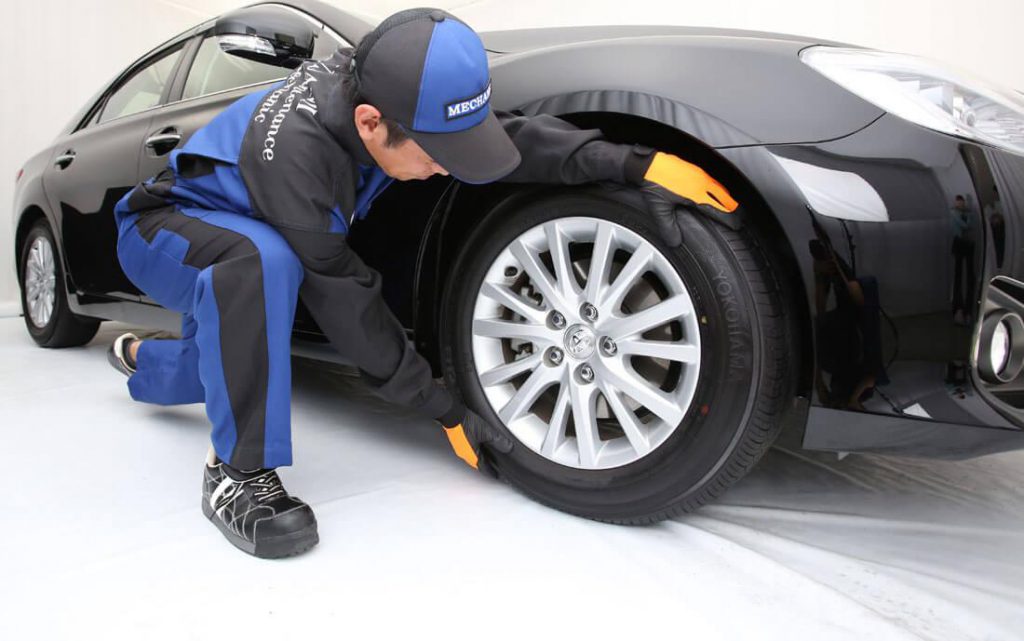
Apply the parking brake and put car into “Park” position. If you have a standard transmission, put your vehicle in first or reverse.
Place a heavy object (e.g., rock, concrete, spare wheel, etc.) in front of the front and back tires that you are going to change. Ensure that the jack is in contact with the metal portion of your car’s frame.
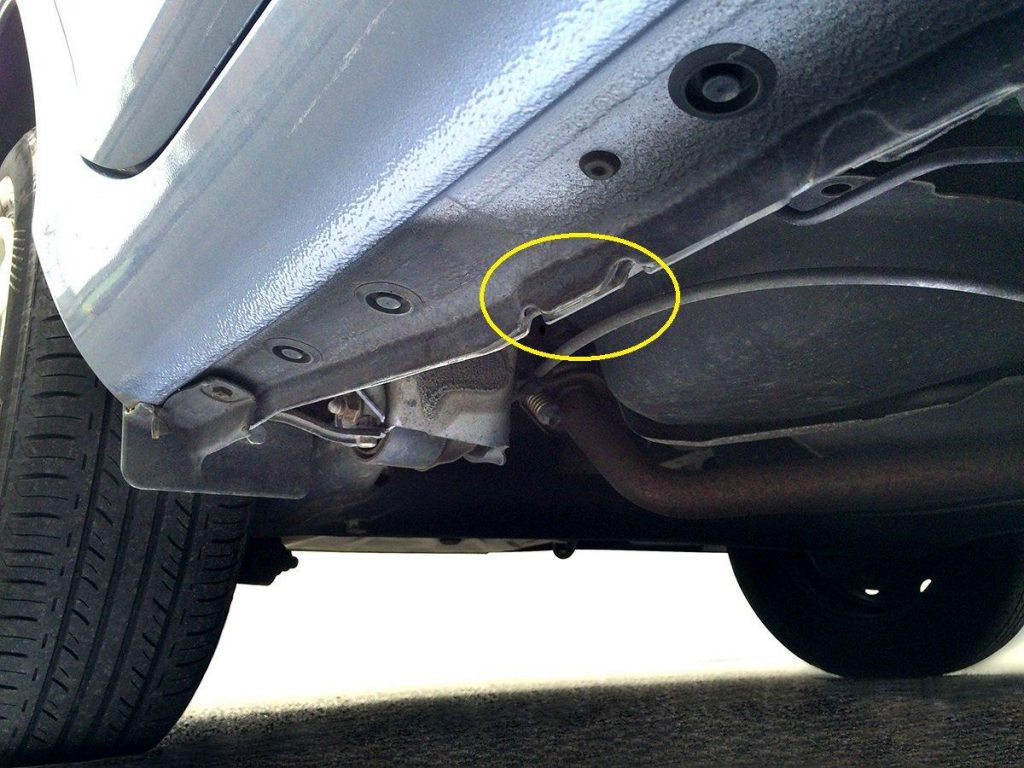
- Many cars have molded plastic along the bottom. If you don’t place the jack in the right spot, it will crack the plastic when you start lifting. If you’re not sure about the right place to put the jack, read your owner’s manual.
- For most modern uni-body cars, there is a small notch or mark just behind the front wheel wells, or in front of the rear wheel wells where the jack is intended to be placed.
- For most trucks or older cars that have a frame, look to place the jack on one of the beams of the frame just behind the front tire or in front of the rear tire.
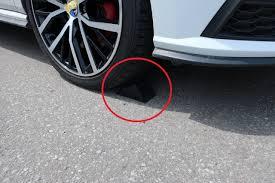
Raise the jack until it is supporting (but not lifting) the car. The jack should be firmly in place against the underside of the vehicle. Check to make sure that the jack is perpendicular to the ground when you first loosen the nuts, you’ll make sure that you’re turning the nuts instead of the wheel.
- Use the wrench that came with your car or a standard cross wrench. Your wrench may have different sizes of openings on different ends. A correctly-sized wrench will slip easily over the nut, but will not rattle.
- Try to prepare for any unforeseen tire changes by keeping the exact socket size for your lug nuts as well as a breaker bar handy in the trunk.
- It can take quite a lot of force to break your lug nuts free. If all else fails, you can use your body weight or stomp on the wrench (be absolutely certain you are turning it the correct way – counterclockwise). However, using your body weight or stomping means you run the risk of stripping the lug nuts, as it is difficult to maintain full contact.
Pump or crank the jack to lift the tire off the ground. You need to lift it high enough to remove the flat tire and replace it with a spare.
- As you lift, make sure that the car is stable. If you notice any instability, lower the jack and fix the problem before fully lifting the car.
- If you notice the jack lifting at an angle or leaning, lower and re-position it so that it can lift straight up.
- It is always a good idea to keep a small jack stand handy in the vehicle as well, in case the jack gives out during the tire change. Using both the small jack and the normal jack will keep you safe in the event of a jack failure.
Remove the nuts the rest of the way. Turn them counterclockwise until they are loose. Repeat with all lug nuts, then remove the nuts completely.
- Although rare, some vehicles actually have reverse threaded lug nuts. These are usually much older cars from Chrysler and GM.
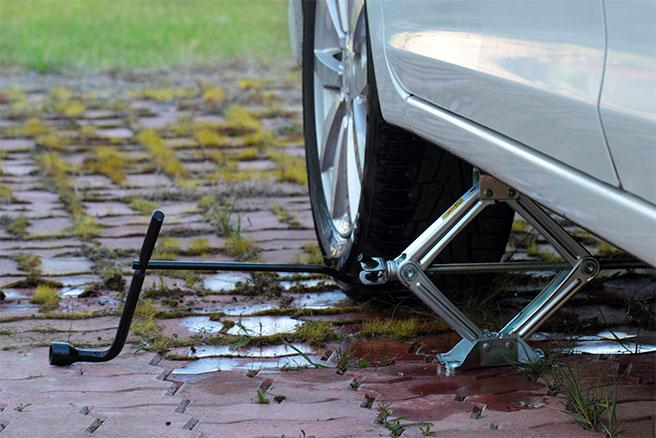
Remove the tire. Place the flat tire under the vehicle so in the event of a jack failure the vehicle will fall on the old wheel, hopefully preventing injury. If the jack is placed on a flat, solid base, you shouldn’t have any problems.
- The tire might stick due to rust. You could try hitting the inside half of the tire with a rubber mallet to loosen the tire, or use the spare tire to hit the outside half.
Place the spare tire on the hub. Take care to align the rim of the spare tire with the wheel bolts, then put on the lug nuts.
- Be sure to install the spare tire the correct way and not backwards. The valve stem of a doughnut tire should face outwards, away from the vehicle.
- If your vehicle uses acorn-style lug nuts, it is easy to put those on backwards as well. Be sure the tapered part of the nut faces the wheel when tightening it down.
Tighten the nuts by hand until they are all snug. They should turn easily at first.
- Using the wrench, tighten the nuts as much as possible using a star pattern. To ensure the tire is balanced, don’t completely tighten the nuts one at a time. Going in a star pattern around the tire, one nut across from another, give each nut a full turn until they are equally tight.
- Avoid using so much force that you risk upsetting the jack. You will tighten the lug nuts again once the car is down and there is no risk of it falling.
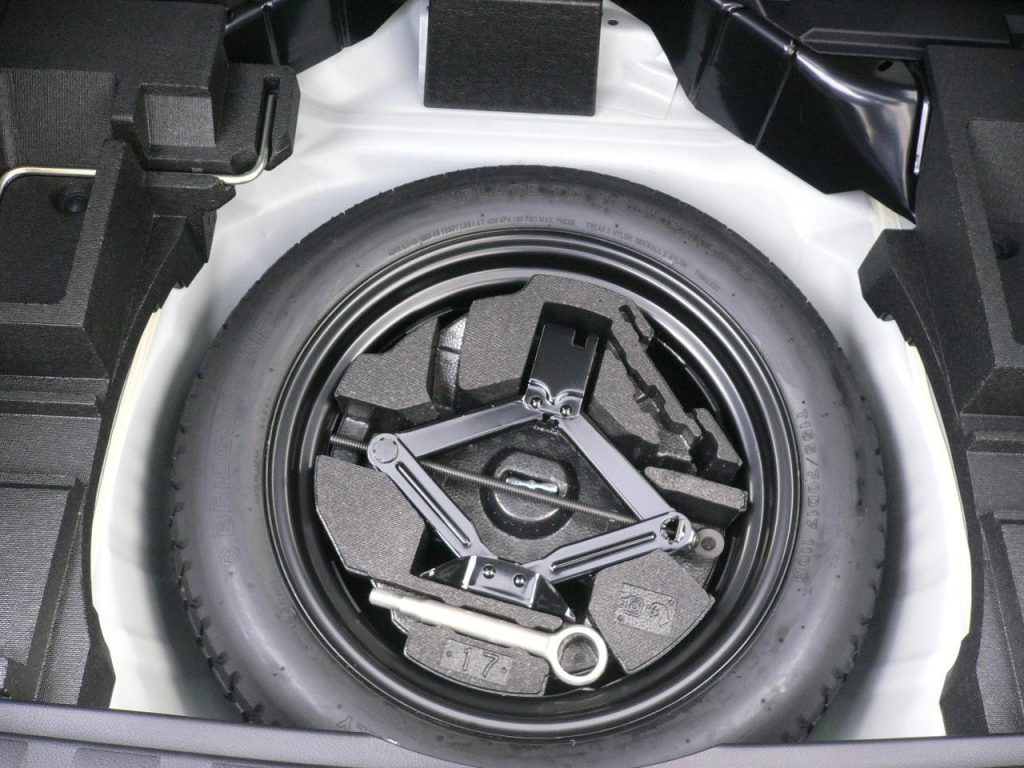
Lower the car without applying full weight on the tire. Tighten the nuts as much as possible.
Put the old tire in your trunk and take it to a mechanic. Get an estimate for the cost of repair. Small punctures can usually be repaired for less than $15. If the tire is not repairable, they can dispose of it properly and sell you a replacement.
Article Written By Ehara Jun © 2019-12-06



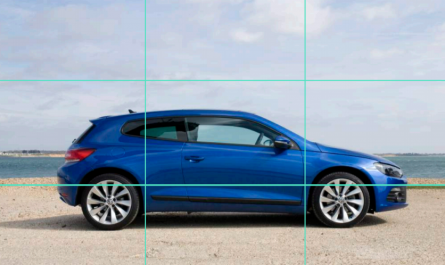
2 thoughts on “Performing a Tire Change”
Comments are closed.